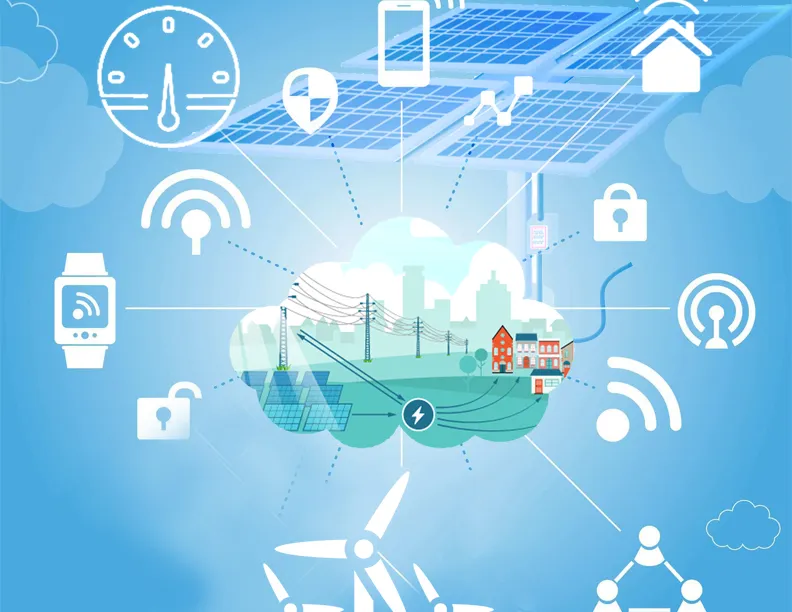The Internet of Things (IoT) has quickly become a game-changer in the energy industry. By connecting millions of devices to the internet, IoT technology can collect data from thousands of sources and unlock insights that were previously impossible. This type of data is preparing us for an exciting future of renewable energy and smart grids. But how does this all work? In this blog post, we’re going to explore the potential of IoT energy and what you need to know about it now. From predictive maintenance to optimizing grid operations, read on to discover how IoT is transforming the way we use energy.
What is IoT Energy?
The Internet of Things (IoT) is an emerging technology that is revolutionizing the way we live, work, and play. IoT devices are connected to the internet and are able to communicate with each other, making our lives more convenient and efficient.
IoT energy refers to the use of IoT devices to manage energy consumption in a more efficient way. For example, you can use an IoT device to monitor your energy usage and make adjustments accordingly. This can help you save money on your energy bill and reduce your carbon footprint.
There are many different types of IoT energy management solutions available on the market today. Some solutions focus on reducing energy consumption, while others focus on increasing renewable energy production. There are also solutions that focus on both reducing consumption and increasing production.
No matter what your specific goal is, there is an IoT energy solution that can help you achieve it. If you’re looking to save money on your energy bill, reduce your carbon footprint, or both, then an IoT energy solution can help you reach your goals.
How Can IoT Energy Be Used?
The potential for IoT energy is exponential. By 2020, it is estimated that there will be 34 billion devices connected to the internet. This number includes everything from your smartphone and tablet to your fridge and washing machine. And as more and more devices become connected, the potential for how we use energy will increase dramatically.
There are a number of ways that IoT energy can be used to improve our lives and the way we use resources. For example, you can use smart meters to track your energy usage in real-time and make alterations to your habits accordingly. Or you could install solar panels that are connected to an online portal, allowing you to monitor your energy production and consumption.
But it’s not just about saving money or being more efficient with our resources; IoT energy can also be used to power entire communities. For example, in the wake of a natural disaster, an IoT-powered microgrid could provide vital backup power to a hospital or shelter. Or in the future, cities could be powered by a combination of renewable sources like solar and wind, with excess energy stored in batteries for when demand is high.
The possibilities are endless – and we are only just beginning to scratch the surface of what’s possible with IoT energy.
The Benefits of IoT Energy
The Internet of Things (IoT) is helping to revolutionize the energy sector. By connecting devices and systems, IoT is enabling a more efficient and sustainable use of energy. Here are some of the benefits of IoT energy:
1. Increased efficiency: By collecting and analyzing data from devices and systems, IoT can help identify inefficiencies and optimize energy use.
2. Reduced costs: IoT can help reduce energy costs by improving efficiency and reducing demand.
3. Sustainability: IoT can help make the energy sector more sustainable by reducing emissions and increasing renewable energy use.
4. Resiliency: By monitoring conditions and managing resources, IoT can help make the energy sector more resilient to disruptions.
5. Innovation: IoT is leading to new innovations in the energy sector, such as smart grids and microgrids.
The Future of IoT Energy
In the not-so-distant future, the energy sector will be radically different than it is today. And a big part of that change will be thanks to the internet of things (IoT).
The IoT is already starting to have a major impact on the energy sector, with smart meters, solar panels and wind turbines that can communicate with each other and share data. This is just the beginning though. In the future, the IoT will enable a fully integrated and decentralized energy system, where consumers are able to produce, store and sell their own energy.
This shift will have a huge impact on the way we generate and use energy. It will make renewable energy sources more viable and help us move away from fossil fuels. It will also make our energy system more resilient and adaptable to changes in demand.
The possibilities for the future of IoT energy are endless. But one thing is for sure: it’s going to be a game changer for the energy sector – and for the world.


